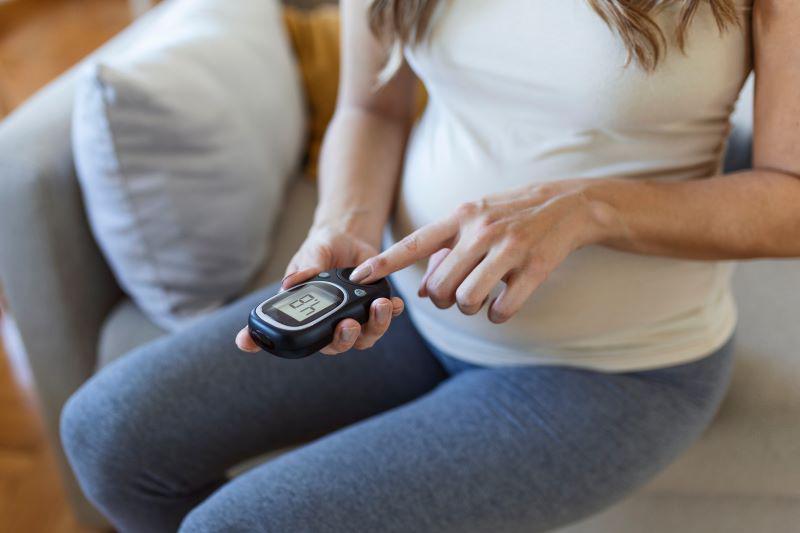Get Healthy!

- Amy Norton
- Posted August 18, 2022
Change to Diagnosis of Gestational Diabetes Helped Women
Using a lower threshold to diagnose pregnancy-related diabetes does not seem to reduce the risk of having a big baby, on average -- but some women do benefit, a new clinical trial suggests.
Gestational diabetes is diagnosed when a pregnant woman's blood sugar levels are abnormally high. The condition can have consequences for moms and babies, a main one being fetal overgrowth. That results in a big baby and a difficult delivery that can injure the newborn or mother, and raise the odds of a Cesarean section delivery. In addition, some infants are born with low blood sugar or breathing problems that require treatment.
For women, meanwhile, gestational diabetes raises the risk of preeclampsia -- a potentially dangerous condition where blood pressure rises and protein accumulates in the urine.
But while gestational diabetes is commonly diagnosed, experts are still debating exactly how to define it, said Dr. Michael Greene, a professor emeritus of obstetrics and gynecology at Harvard Medical School, in Boston.
"The problem has been gathering the evidence on where to draw the line," said Greene, who wrote an editorial published with the new study in the Aug. 18 issue of the New England Journal of Medicine.
Back in 2010, the American Diabetes Association and the International Association of the Diabetes and Pregnancy Study Groups (IADPSG) lowered their recommended blood sugar thresholds for diagnosing gestational diabetes.
That was based on a large international study that found the risks of negative pregnancy outcomes continuously rose with blood sugar levels. There was no clear "inflection point," Greene explained, that could be used as a cutoff for diagnosing gestational diabetes.
So, the expert consensus was to lower the blood-sugar threshold for diagnosing the condition, in the hopes it might prevent more pregnancy complications.
In the new trial, researchers in New Zealand tested the impact of those lower thresholds, versus higher ones that are still used in that country.
And they found that, overall, women diagnosed with gestational diabetes according to the lower threshold were no less likely to have a large newborn, versus those diagnosed based on the higher thresholds.
But there were benefits when the researchers focused on the subgroup of women whose blood sugar levels fell in between the higher and lower thresholds -- meaning they would not have been diagnosed with gestational diabetes based on the higher cutoff.
Among those women, treatment for gestational diabetes did lower the risk of having a large newborn, as well as the risk of preeclampsia.
"The health differences we did see... were driven by the 9% of women with 'milder' gestational diabetes, whose [blood sugar] results fell in between the higher and lower thresholds," explained lead researcher Dr. Caroline Crowther, of the University of Auckland.
She said the finding supports using the lower cutoff -- though that will mean more pregnant women being treated for diabetes. That typically means diet changes, physical activity and regularly doing finger-sticks to check blood sugar levels; some women need to take insulin or the oral medication metformin.
"Use of the lower [blood sugar] threshold will mean more women will be diagnosed with gestational diabetes, and that will increase health service utilization," Crowther said. "But for the women with milder gestational diabetes so detected and treated, the study suggests important health benefits."
The study involved just over 4,000 pregnant women who were being evaluated for gestational diabetes. Half were randomly assigned to a higher-threshold group, where the condition was diagnosed according to recommendations used in New Zealand. The other half were assigned to a lower-threshold group, using the blood sugar cutoffs recommended by the IADPSG.
As expected, the lower cutoffs resulted in more women being diagnosed with gestational diabetes: 15% versus 6%. Just under 9% of newborns in both groups were large for gestational age -- above the 90th percentile for babies born at that week of pregnancy.
Then, the researchers focused on that group of women between the two thresholds, who could be considered to have mild gestational diabetes. Among those in the lower-threshold group -- who were diagnosed and treated for the condition -- 6% had a large newborn. That compared with 18% in the higher-threshold group, who went untreated.
The treated women also had a lower rate of preeclampsia, 0.5% versus over 5% in the higher-threshold group.
Crowther said that in places where the lower threshold is not currently used, such as New Zealand, it might be time to consider it.
But the question of the optimal blood sugar cutoff remains open, according to Greene. The goal, he said, is to identify the greatest number of pregnant women who can benefit from blood-sugar management, without being so "stringent" that healthy women are diagnosed with a medical condition.
"There's no question that finding and treating gestational diabetes works," Greene said.
As for preventing it in the first place, he said that going into pregnancy at a healthy weight can reduce the risk.
More information
The U.S. National Institute of Diabetes and Digestive and Kidney Diseases has more on gestational diabetes.
SOURCES: Caroline Crowther, MD, professor, maternal and perinatal health, Liggins Institute, University of Auckland, New Zealand; Michael Greene, MD, professor emeritus, obstetrics and gynecology, Harvard Medical School, Boston, and associate editor, New England Journal of Medicine; New England Journal of Medicine, Aug. 18, 2022

